Company History

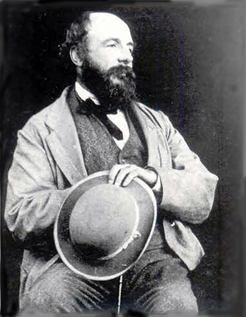
John Caldwell Bloomfield (1823-1897)
In 1849 John Caldwell Bloomfield inherited the Castlecaldwell estate, which encompassed the village of Belleek, from his father. Mindful of the plight of his tenants in the aftermath of the potato famine he sought to provide some form of worthwhile employment. An amateur mineralogist, he ordered a geological survey of his land. To his delight it revealed the necessary raw materials to make pottery – feldspar, kaolin, flint, clay and shale.
The village of Belleek, whose name in Gaelic, beal leice, translates to ‘‘Ford of the Flagstones’’, was a natural choice to locate the business, especially the part of the village known as Rose Isle. This small isle provided the best opportunity to unleash the yet untamed power of the River Erne – power to drive a mill wheel strong enough to grind components into Slip, the term applied to liquid potters clay.
Bloomfield acquired partners in the venture, Robert Williams Armstrong an architect from London but originally from Co. Longford who had an abiding interest in ceramics, and David McBirney, a wealthy Dublin merchant and owner of the drapery firm of “McBirney & Collis” of Arran Quay.
Next he pulled strings, lobbied and practically paved the way single handedly for the Rail Service to come to Belleek. By rail, coal could be brought in to fire the Kilns and the finished Belleek product could be sent to market with ease.
Raw materials, power, capital and transportation all in place, plans for the construction of a pottery building were drawn up. On Thursday 18th November 1858 Mrs Bloomfield laid the foundation stone.
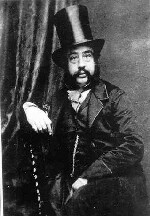
Robert Williams Armstrong (1824-1884)
Young apprentices and capable workmen were to be found locally but Armstrong, knowing that the Pottery’s success hinged on talented craftsmen and experienced Potters, went to England. Offering high wages and a better lifestyle he brought back 14 craftsmen from Stoke-on-Trent.
The Pottery’s early production centred on high quality domestic ware – pestles, mortars, washstands, hospital pans, floor tiles, telegraph insulators and tableware. However from the beginning Armstrong and McBirney wanted to make porcelain not only to utilise the available mineral wealth but also to give full scope to the craftsmanship quickly developing in the pottery. Their early attempts failed and it was not until 1863 that a small amount of Parian was produced. Even though the knowledge and skill to create Parian had been gained, earthenware remained the principal product at Belleek until 1920.
By as early as 1865 the company had established a growing market throughout Ireland and England and was exporting pieces to the United States, Canada and Australia. Prestigious orders were being received from Queen Victoria, the Prince of Wales and the nobility. Porcelain was featured by Belleek for the first time at the Dublin Exposition of 1872. Their display was the largest in the Irish and English industrial areas. Among the pieces listed in the catalogue for the event are Parian china statues and busts, ice buckets, compotes and centrepieces.
William Henshall came to Belleek in 1867 bringing with him the craft of basket and flower making. This he developed over the following thirty years creating some iconic baskets including the Henshall handled basket, Sydenham Basket and the Rathmore basket.
McBirney died in 1882 and Armstrong in January 1884. A group of local investors acquired the property and a new venture the Belleek Pottery Works Company Ltd began trading in August 1884. The new Company officially acquired all the property.

Frederick Slater
In 1893 Belleek acquired one of its finest master craftsmen Frederick Slater, who came from Stoke-on- Trent in England. He took charge of the design department and remained in that role for the next forty years.
It is believed that he modelled the much honoured international centerpiece which stands 28’’ tall, it was awarded a Gold Medal at the Paris Exhibition of 1900. This piece is on display at the Belleek Visitor Centre.
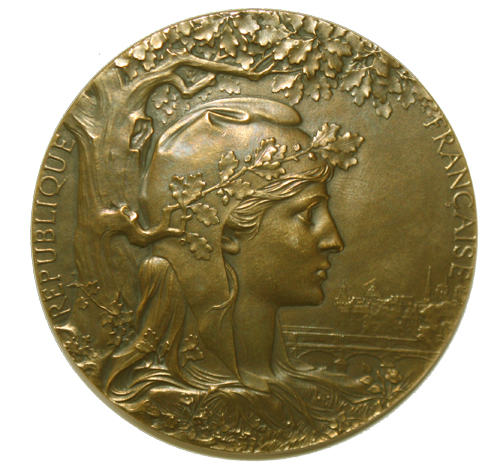
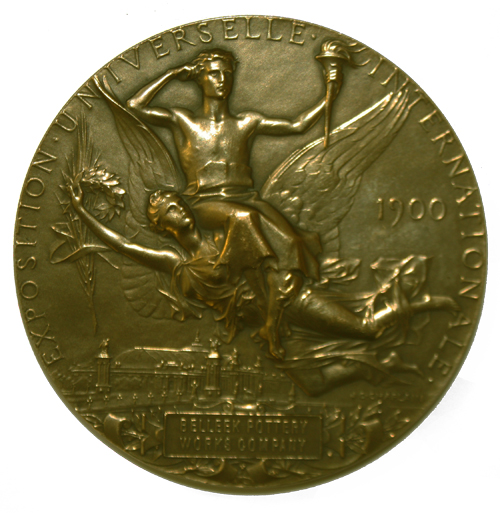
Paris Exposition Gold Medal 1900
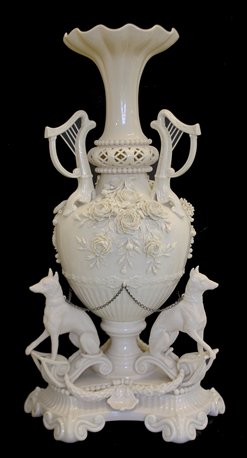
International Centre-piece
Belleek struggled through the First World War years with restrictions on exports taking their toll. The order books dwindled and did not recover and in 1920 Bernard O’Rourke, a prominent millowner in Inishkeen and Dundalk acquired the business for £10,000. He and other shareholders set up Belleek Pottery Limted. World War 11 put the Pottery under great pressure, coal was rationed , production fell and export markets dried up but through the skilful management of Eric Arnold Belleek weathered the storm and continued to operate producing mainly basic utility earthenware. Soon after the Second World War two new Allport kilns were installed needing only nine tons of coal compared to the nineteen tons used by the old bottle kilns. The company ceased the production of earthenware and concentrated on making Parian
The company could barely keep up with orders and in 1952 installed its first electric kilns. In 1966 the company modernised its production system and replaced many of the old workshops. However by the late 1970s tastes were changing and the company experienced many ups and downs that led to thesale of Belleek Pottery Limited in 1984.
The Pottery changed ownership twice in the following six years. However by 1989, when the Belleek Visitors Centre was opened, the company was in a much stronger financial situation and was bought by Erne Heritage Investments owned by Dr. George Moore who was born in Dundalk Co. Louth. The Belleek Pottery Group is now owned by the George and Angela Moore Charitable Trust.
The management team of John Maguire (Managing Director) Martin Sharkey (Financial Director) Arthur Goan (Operations Director) and Hugh Quinn (Sales Director) oversaw the rapid expansion of Belleek by streamlining the production facilities and erecting new kilns and workshops.
The business expanded into a portfolio of giftware brands with the acquisition of Galway Crystal in 1993, Aynsley China in 1997 and Donegal China in 2000.
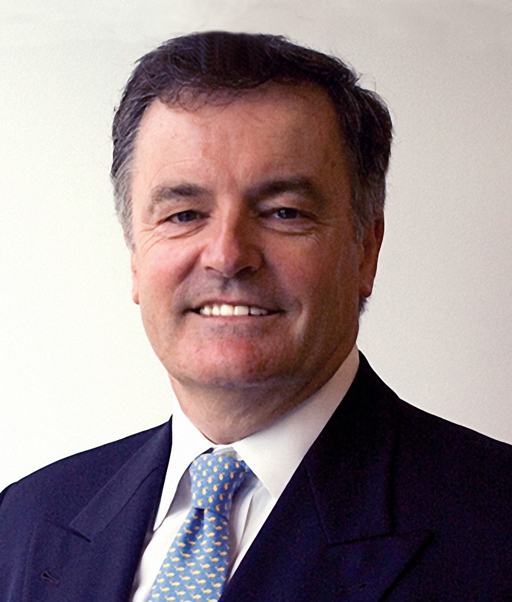
Dr. George Moore
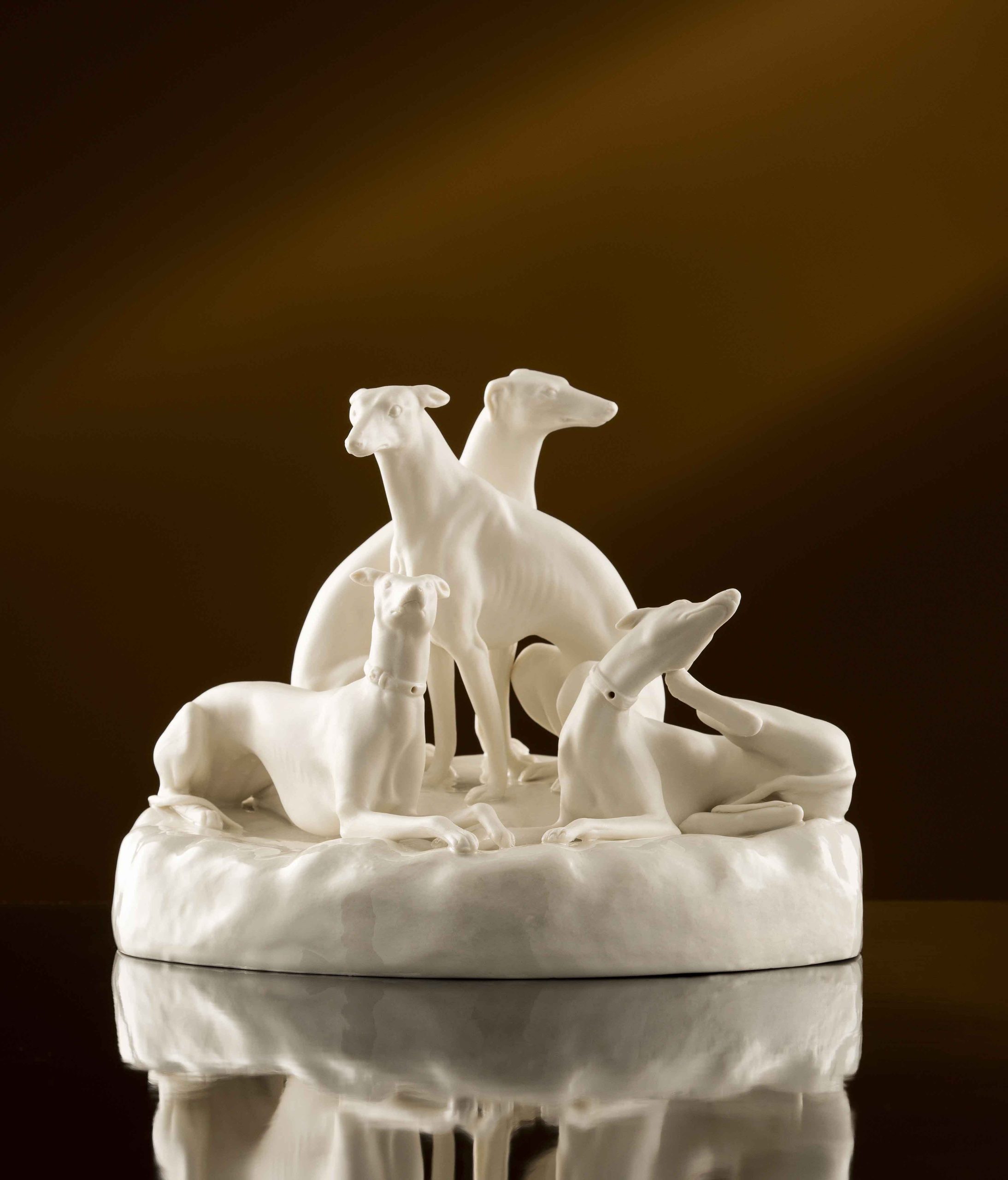
Group of Greyhounds
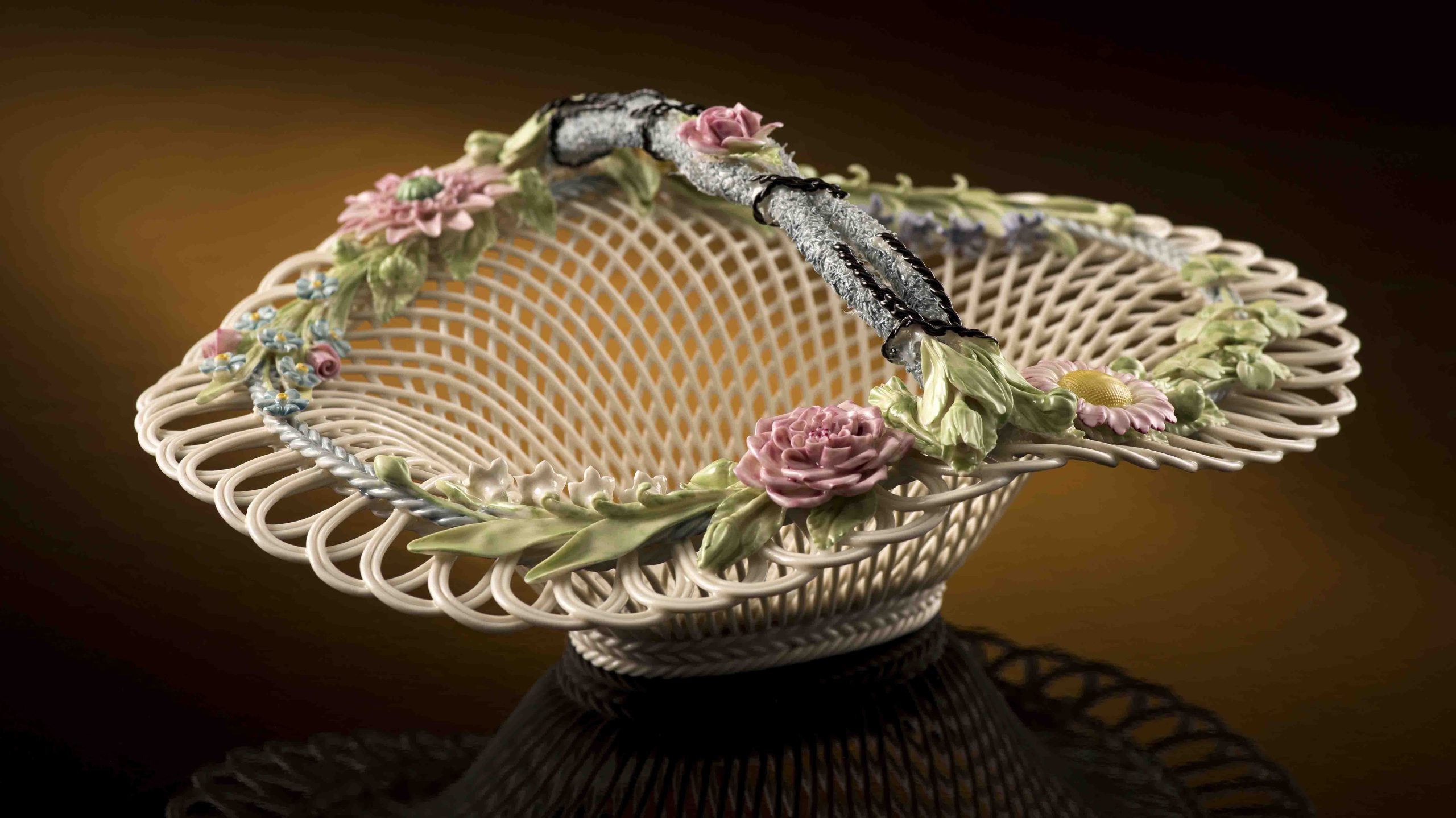
Henshall Handled Basket
In 2003 Belleek diversified its product range by establishing a new brand name called “Belleek Living” this fresh, contemporary giftware and casual dining collections seek to give the modern Belleek customer products to compliment their decor and lifestyles.
In May 2014 Belleek Visitor Centre won the very prestigious “Best Tourism Experience” awarded by the Northern Ireland Tourist Board.
In 2017 Belleek Pottery celebrated the 160th Anniversary of its foundation in 1857 by re-introducing sixteen archive pieces, each one created in and representing one of the sixteen decades of the company’s story, including the stunning piece called the ‘Group of Greyhounds reputedly designed by the Reverend Halaghan Dunbar in 1865 and the Henshall Handled Basket created by William Henshall in the 1880s.
Also as part of the celebrations a gallery of one hundred and sixty pictures was opened showing scenes and people from the pottery over 160 years. These can be viewed in the Visitors Centre.
The present management team is led by Group Financial Director Martin Sharkey. In 2023 Belleek began a programme to install solar panels on the extensive roof space in the complex to provide renewable energy and to offset the increasing costs of electricity.
Belleek continues to create new and exciting designs,mindful of its history and craft heritage but seeking to create products both decorative and useful for today’s generation. Belleek is proud of its contribution to the artistic, commercial and business life of Ireland both past & present. It is both forward thinking and ready for the challenges the future will bring.
